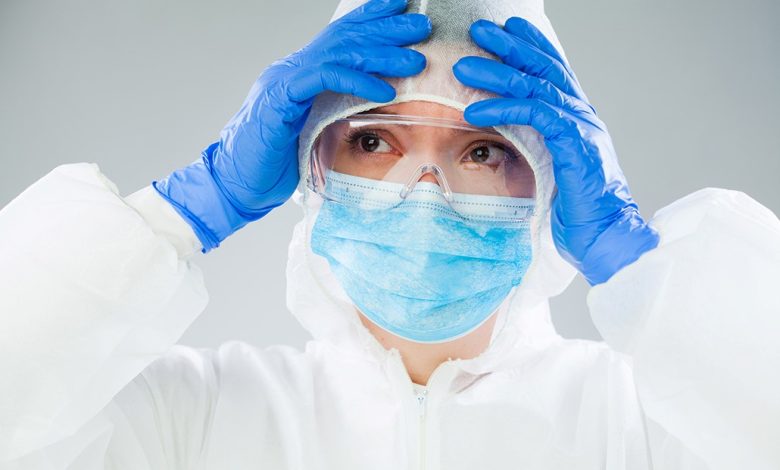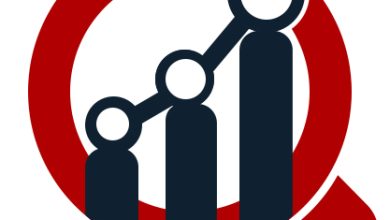
A large number of manufacturers and distributors are mainly focusing on the development of more sustainable and recyclable materials for a wide range of industries. They are also adopting the set of norms provided by government agencies worldwide. And The demand for surgical gowns and isolation gowns has upsurged rapidly in the healthcare sector to prevent the transmission of microorganisms through blood or bodily fluids in themselves, as well as the patients.
In the healthcare environment, there is a rising demand for Protective Clothing to prevent contamination from various sources. Healthcare workers are persistently working to control the rate of infection by correctly disposing and laundering the clothing.
The Directorate-General of Health Services, the Department of Health and Family Welfare, OSHA, and the World Health Organization (WHO) have implemented a new set of rules for workers in primary health care centers, quarantine centers, laboratories, and points of entry. POE) and hospitals.
Rising Usage of Protective Clothing to Prevent Injuries will drive the Chemicals Segment
Based on end use, the industry is fragmented into oil & gas, firefighters, chemical, pharmaceutical, and others. Amongst these, the chemical segment is expected to procure the largest share owing to the increasing usage of Protective Clothing in the chemical industry for preventing injuries caused by hazardous chemicals, such as cleaning agents, degreasers, and paints. Besides, workers in several industries are nowadays exposed to various types of toxic chemicals. The oil & gas segment, on the other hand, held a 13.5% Protective Clothing industry share in 2019.
Protective Clothing Industry Segmenatation in 2022
The global Protective Clothing industry is anticipated to be driven by the rising government norms worldwide to maintain workplace safety, especially in the manufacturing, food processing, construction, healthcare, and chemical industries. Also, the increasing cases of accidental injuries and mortalities would affect the industry positively. This information is a recent study, titled, “Protective Clothing Industry Size, Share & Industry Analysis, By Product (Disposable and Durable), By Application (Flame Retardant Apparel, Chemical Defending Garment {Radiation Protection, Particulate Matter, and Others}, Clean Room Clothing, Mechanical Protective Clothing, and Others), By End-Use (Pharmaceutical, Oil & Gas, Chemical, Firefighters, and Others), and Regional Forecast, 2020-2027.” The study further states that the Protective Clothing industry size was USD 12,481.0 million in 2019 and is projected to reach USD 34,316.9 million by 2027, exhibiting a CAGR of 14% during the forecast period.
Lists out the names of all the organizations present in the global Protective Clothing industry. They are as follows:
- TenCate Protective Fabrics (U.S.)
- Kimberly-Clark Corporation (U.S.)
- Ansell Microgard Ltd. (U.K.)
- DuPont (U.S.)
- Bennett Safetywear Ltd. (U.K.)
- TEIJIN LIMITED (Japan)
- Udyogi (India)
- Sanctum Work Wear Pvt. Ltd. (India)
- Derekduck Industries Corp. (Taiwan)
- Protective Industrial Products (PIP) (U.S.)
- Other prominent companies
The report offers detailed insight into new product launches, new technology evolutions, innovative services, and ongoing R&D. The report discusses a qualitative and quantitative analysis of the market including PEST analysis, SWOT analysis, and Porter’s five force analysis. Global Protective Clothing market report focuses on major six regions namely North America, Latin America, Europe, Asia Pacific, Middle East, and Africa. The report also provides fundamental details such as raw material sources, distribution networks, methodologies, production capacities, industry supply chain, and product specifications.
Having our reviews and subscribing to our report will help you solve the business growth issues:
Uncertainty about the future: Our research and insights help our customers predict the upcoming revenue pockets and growth areas. This will guide customers to invest their resources.
Understanding market sentiments: It is very important to have a fair understanding of market sentiment for your strategy. Our insights will help you see every single eye on industry sentiment. We maintain this analysis by working with key opinion leaders on the value chain of each industry we track.
Understanding the most reliable investment Factors: Our research evaluates investment factors in the market, taking into account future demand, profits, and returns. Clients can focus on the most prestigious investment centers through market research.
Evaluating potential business partners: Our research and insights help our clients in identifying compatible business partners.
North America to Dominate Fueled by Strict Laws by OSHA Regarding Workers’ Safety
The industry is regionally categorized into the Middle East and Africa, Latin America, Asia Pacific, Europe, and North America. Out of these, North America procured USD 4,677.9 million in revenue in 2019. It is set to dominate throughout the forecast period. This growth is attributable to the rising number of stringent norms put forward by the Occupational Safety and Health Administration (OSHA) to ensure workers’ safety. The organization has formed certain safety standards associated with industrial disasters, such as manufacturing machinery failures, fires, and others. The Asia Pacific would grow rapidly backed by the rising rates of occupational accidents in the developing countries, such as South Korea, India, and China.
Key Manufacturers Aim to Enhance Portfolio through Acquisitions
A large number of manufacturers and distributors are mainly focusing in the development of more sustainable and recyclable materials for a wide range of industries. They are also adopting the set of norms provided by government agencies worldwide. In addition to that, they are following the strategy of mergers and acquisitions to broaden their product portfolio & serve their consumers better. Below are two of the latest industry developments:
- March 2020: Lakeland Industries, Inc. augmented its previously planned expansion of the manufacturing capacity by 30%. Since the past couple of years, it has invested around USD 6 million to widen its manufacturing footprint into India and Vietnam, increase margins, improve efficiencies, as well as add and update IT systems. The company decided to upsurge production because of the outbreak of the Covid-19 pandemic.
- February 2019: Protective Industrial Products, Inc. (PIP) successfully acquired West Chester Protective Gear. This new deal would solidify PIP’s position in the global industry in North America. It would be able to deliver the retailers and distributors in the safety industry with a broad product
Some of the Key Questions Answered in this Report:
- Who are the global key manufacturers of the Protective Clothing Industry? How is their operating situation (capacity, production, sales, price, cost, gross, and revenue)?
- What are the Protective Clothing market opportunities and threats faced by the vendors in the global Protective Clothing Industry?
- Which application/end-user or product type may seek incremental growth prospects?
- What focus approach and constraint are holding the Protective Clothing market?
- What are the upstream raw materials and manufacturing equipment of Protective Clothing? There along with the manufacturing process?
- What are the key industry trends impacting the growth of the industry?
- What is the global (North America, Europe, Asia-Pacific, South America, Middle East, and Africa) sales value, production value, consumption value, import, and export?






